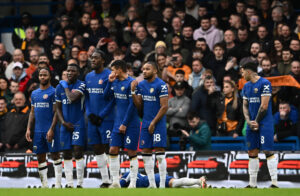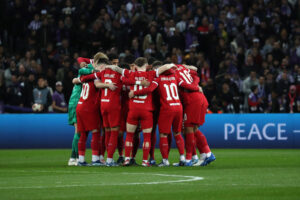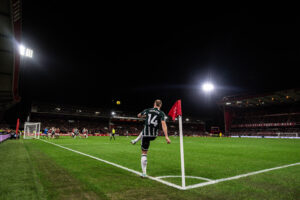Istanbul is a city which is held in high regard by the world. Labelled as “the city that is older than time itself” by their ever-loyal local inhabitants, the city exhibits class and elegance throughout. The only transcontinental city in the world, it separates two of the country’s and the world’s most famous football sides. Fenerbahçe and Galatasaray square off each year in the fiery, albeit pleasing, Intercontinental Derby.
The Derby Series: Fenerbahçe vs Galatasaray
Istanbul is famous for its many football teams. Apart from the “big two”, there’s also the presence of Kasımpaşa and defending Turkish champions Beşiktaş. The initial aim for the city’s football sides was to have Galatasaray and Fenerbahçe united as one, against all the other non-Turkish sides in the league.
The team would have been called Türkkulübü. But due to the Balkan War in 1913, Galatasaray president Ali Sami Yen and Fenerbahçe’s Galip Kulaksızoğlu had to stop and eventually abolish the idea.
The rivalry between the two started in 1934, when a supposed friendly between the two was met with tension and riots on and off the pitch. The events of that Friday have led to an impeccable rivalry ever since and have seen incidents that changed Turkish football forever.
Galatasaray’s Domination and Ambition
“We were imagining brightness of yellow-red fire over our team and thinking that it would carry us from one victory to another.” – Ali sami yen, Galatasaray’s first president, player and member.
Galatasaray are a club formed on historical grounds that defines what they are about. Named after the Galatasaray High School, which was founded in 1481 and is the oldest school in Turkey, the initial side took all its players from the school. The colours of the club (red and gold) were decided by the favourite roses of Gül Baba, the man who founded the school in the 15th century and a famous Istanbul poet, while the name means Glory and Courage. Following the motto and name of the side, the club went from strength to strength in their illustrious future.
Ali Sami Yen was the club’s first president, player and member after discovering the sport from the English and convincing friends to expand upon the Galatasaray High School and create a sporting department in 1907. He made the team successful and won them their first Istanbul League Titles, a competition which now ceases to exist. His influence over the club protected them from Turkish laws and he later went on to have a stadium named after him to honour his devotion and dedication towards the Istanbul giants.
Galatasaray have an obsession towards success on the European stage. Despite a history that exceeds over a hundred years and a reputation of being Turkey’s most successful side, they’ve never won the holy grail of European domestic football – the UEFA Champions League. They did, however, win the UEFA Cup in 2000 – beating Arsenal in the final in Copenhagen. That season was the most triumphant in the club’s distinguished history, where they added the Türkiye Kupası (Turkish Cup) and the Turkish League titles to add to their continental glory.
Galatasaray are currently banned from European competition for breaching UEFA’s Financial Fair Play regulations, but are well-renowned for the impact they made when they were there. They’ve been successful against the relatively “bigger sides” when their fans are in full voice – just ask Manchester United or Barcelona. Sir Alex Ferguson‘s troops were given a hostile “welcome to hell” just before the two sides clashed in 1993. The game ended in a scoreless draw, while Barcelona were taken down 2-1 in the same season.
Galatasaray were Turkey’s greatest export in the 1990’s, and to honour that tag, they shifted towards appointing more well-known foreign managers that would bolster the club into international supremacy. One such man was Graeme Souness, who arrived from Liverpool, and was, at one time, the most hated man in Istanbul.
Rivalry
The Intercontinental Derby is eminent for it’s raging nature and Souness was one of the few people in history to help trigger that. In his only season at the club between 1995 and 1996, his side struggled and were hampered by inconsistency with Fenerbahçe and Trabzonspor leading the title race. They did manage to make it to the Turkish Cup final, however it was an unlikely chance to salvage something from a horror campaign.
About 18 months prior to that final, Souness was labelled as a “cripple” by one of the Fenerbahçe board members, a tag which infuriated the Englishman. The two-legged final saw Dean Saunders score the winner in the first leg at home, as well as a late equaliser at Fener’s ground in the second game to seal the title and help create an image that lives in the minds of football fans forever.
In a bid to get back at the Fenerbahçe boardroom, Souness picked up a gold and red flag from the supporters and stormed to the centre-circle, planting the flag and nearly causing a riot in the ground. Similar to the time Buzz Aldrin and Neil Armstrong planted the American stars and stripes on the moon to alter mankind, this reaction altered football culture and changed the general perception of derbies not only in Turkey but all over the world.
“When I planted it and turned around, I quickly realised there were a number of supporters trying to get on to the pitch.” – Graeme souness
And just like any other derby in world football, this one has its fair share of fights, ranging from racism to vandalism to on-pitch altercations and the worst forms of hooliganism. The latter was evident as recently as 2013, where there was a vile stabbing of a young Fenerbahçe supporter, as well as racist chanting and horrendous name calling of the African contingent of Gala players. This was the dark side of football and just one of the games in a long list of derbies that had seen the other half of the rivalry.
Fenerbahçe’s Grand Fandom and Nobility
“Yes, we do have a chance to beat Fenerbahce but not at their stadium, we can’t do it there no matter what we do, with that fan atmosphere.” ex-Gençlerbirliği player, tolga
Unlike their traditional rivals, Fener are the people’s club of the city. Formed in 1907 by Necip Okaner and Ziya Songülen with the aim of keeping a low profile to avoid an altercation with the Ottoman law, the latter played in defence for the club. Based in the Asian side of Istanbul, their name incorporates their location. ‘Fener’ translates to lighthouse and is a famed site in the region along the Sea of Marmara in Istanbul, while ‘bahçe’ translates to garden.
The club’s crest consists of five colours and each of them has a significant meaning that represents the history of the club and the respect they have for their fans. The most prominent red colour represents love towards the club and the flag of Turkey. The white displays peace and purity, the navy blue shows nobility, yellow symbolises admiration and envy while the green leaf explains that success for the club is essential.
As mentioned before, the navy and gold side show great importance towards their ever-loyal support. As one of the greatest fanbases in the world, the club return the favour in every way possible, with the most famous one being the retirement of the number 12 shirt. In adulation to their founders, the team represents the hard-working, blue collar citizens of Istanbul, contrary to their rivals who represent the rich.
Classy, elegant and sophisticated, Fenerbahce are seen as the ‘more noble’ of the three Istanbul ambassadors on the global stage.
Just like Ali Sami Yen across the continent, Fener fans have their own icon to look up to. He goes by the name of Mustafa Kemal Atatürk, and he is a hero in all Turkish eyes. Known as the “Father of Modern Turkey” for his leadership of the Turkish National Movement and the fight for independence, he is said to have blessed the club towards “eternal success” and the club have certainly followed through.
Despite being more loved, they’ve been less successful than Galatasaray on the football pitch. They’ve earned 19 domestic league titles (one less than Galatasaray), six cups (11 less than their rivals) and no European honours. Nevertheless, they are distinguished locally and internationally, still with a certain aura and pedigree in world football.
Gameday
Hostile, aggressive, combative and every other similar synonym that comes to mind can be associated with this fixture and whenever these two are mentioned in the same sentence. The two hate each other in the worst way and that is exemplified in every place possible, including out on the football pitch.
Just like the derbies between Barcelona and Real Madrid in Spain, River Plate and Boca Juniors in Argentina or Liverpool and Everton in England, this is a clash across two continents that every football supporter needs to witness.
PREVIOUS EDITION OF THE DERBY SERIES: ATLETIC BILBAO VS REAL SOCIEDAD
Main Photo:






